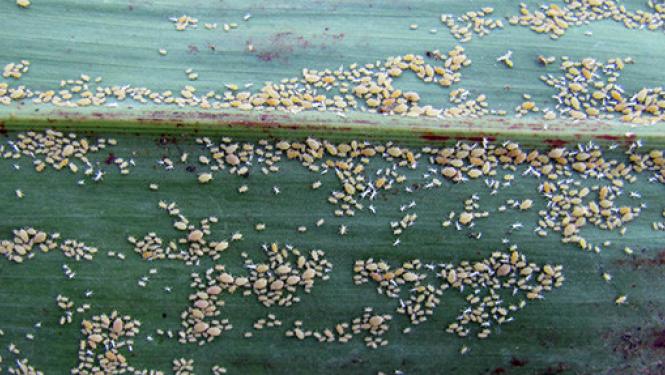Small pockets of the sugarcane aphid have been reported in South Georgia. They are expected to move north as the season progresses. Be prepared to reduce losses.
What's The Big Deal?
In 2013, this aphid made the jump from feasting on sugarcane alone to forage sorghum, sudangrass, and sorghum sudan. They feed on the leaves, sucking the sugars from the plant, and leave behind a sticky residue. In addition to reducing the quality of the crop, this “honeydew” residue can create mold and smut. If left without intervention, fields with the sugarcane aphid will become unproductive.

What Can You Do?
Scout! Aphids are prolific reproducers, so it is necessary to take a look at each field once a week. Walk 25 feet into the field and look at the underside of 15 plants across 50 feet of row. Move to another section of the field and repeat. If there are only a few aphids or winged adults, continue scouting each week. If aphids are found in the mid-canopy, begin scouting twice per week. If aphid numbers exceed to economic thresholds, explore a control protocol. Action needs to be taken if 25% of plants are infested with 50 or more aphids (pre-boot through dough plant stage). If the field is ready to graze or harvest, do so immediately. If not, chemical action may need to be taken. Sivanto and Transform are currently labeled for use. Consult your chemical representative for further spraying recommendations.
